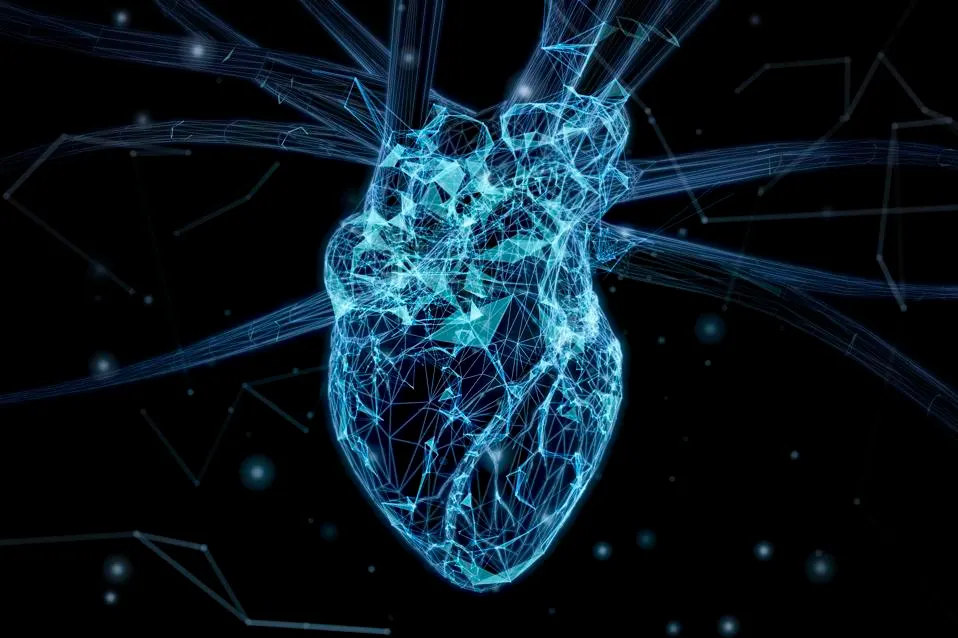Digital twins on the manufacturing menu – with help from the hyperscalers
SOURCE: HTTPS://WWW.IOTTECHNEWS.COM/
NOV 16, 2023
Bio-Digital Twin: Getting The Heart Right
SOURCE: HTTPS://WWW.FORBES.COM/
AUG 17, 2023

The market for digital twins is maturing. Targeted for the most part at industry and manufacturing, Fortune Business Insights projected the market to be valued at $11.51 billion in 2023 with a CAGR of 42.6% through 2030. An emerging bio-digital subset is also gaining traction.
The idea of a medically relevant, digital alter ego of a human—or part of one—is not as far-fetched as it once seemed. Focusing on cardiovascular disease alone, a review article published in August 2022 found 15 companies with a commercial interest in this emerging field, three cardiac-related patent applications and 88 peer-reviewed papers. That's a broad base of activity.
The surge of interest in the overall category of digital twins has led to some confusion, as tends to happen during "hype" cycles. A closer look at the cardiovascular bio-digital twin (one area of focus for my research organization) can help clarify matters.
First, the existence of this niche says something. A bio-digital twin does not have to represent an entire person. Just as you can build twins of subsystems such as aircraft wings or landing gears, you can also model physiological systems—something less than an entire human body.
Second, a twin is not purely data-driven. The cardiovascular bio-digital twin is not a series of EKG readouts, stress-test results, blood pressure readings or other such data. To begin with, a twin requires the parameters of a physics-based model. In our case, that would be the four interconnected heart chambers linked to a network of veins and arteries that allow for defined volumes of blood flow.
These points may sound elementary, but fuzzy thinking is widespread. Simply mixing health data and artificial intelligence does not lead to a digital twin, nor does turbo-charging an individual's electronic health records. Neither accomplishes the goal of enabling medically valid simulations, tests and predictions.
Getting this right is important. If you're building the "digital twin of a customer" (another growth segment that Gartner Inc. has identified in its Immersive Hype Cycle series), mistakes may have business implications but not life-or-death consequences. The most likely early use cases for cardiovascular bio-digital twins involve patients in critical care, so defining the twin's components must be precise.
The model comes first. The cardiovascular system is complex, but it can be depicted mechanistically. For instance, capacitors, diodes and resistors in an electrical schematic can stand for heart chambers, valves and systemic vasculature in a human being, with current representing blood flow. In this understanding, analog circuitry—not binary data—drives the model. That becomes the framework for building out hypotheticals.
There is still a need for data and computation. Tuning the generic model to an individual digital twin requires combining population-level knowledge and a patient's own data. From our point of view, this process involves two steps.
First, you build up a digital population of hypotheses and corresponding predicted measurements under different contexts. This may entail working with large public health data sets. (We are collaborating with Japan's National Cerebral and Cardiovascular Center on this task.) Next, you combine observed patient measurements with observed context using statistical inference to discover which of the original hypotheses are most likely to explain current observations. That distribution of hypotheses is the digital twin.
This twin, therefore, is not a 3D hologram that you can virtually hold or spin around. That's another misconception. In the end, it looks rather mathematical and plain.
However, flashy shouldn't be the point. In the case of a cardiovascular bio-digital twin, the goals are to find scientifically sound ways to enhance visibility into the conditions of individual hearts and reduce the role that cardiac failure plays in global mortality rates. Other bio-digital twins may have similar aspirations. Regarding digital twins in manufacturing, transportation and elsewhere, the aim is also to simulate a system to understand it better and support better decision-making.
Whatever the case, if you are engaged in any such digital-twin initiative, consider adopting this shared outlook and methodology:
• Keep the end goal front of mind, not the technology.
• Realize that building a digital twin requires a good model that represents the target system and that the model needs to be purpose-built for the specific end goals.
• Combine population and individual data to generate hypotheses and predictions.
• Mind your math: Bio-digital twins are more statistical distributions than bright objects.
The market for digital twins is valued so high because of promised improvements. Bio-digital twins are poised to lengthen lives. The race to build them all is on. May the best twins win.
- Kazuhiro Gomi
LATEST NEWS
WHAT'S TRENDING


Data Science
5 Imaginative Data Science Projects That Can Make Your Portfolio Stand Out
OCT 05, 2022

SOURCE: HTTPS://WWW.IOTTECHNEWS.COM/
NOV 16, 2023
SOURCE: HTTPS://AITHORITY.COM/
OCT 03, 2023
SOURCE: HTTPS://WWW.SCIENCEDAILY.COM/
AUG 08, 2023
SOURCE: HTTPS://WWW.GLOBALLOGIC.COM
JUL 06, 2023
SOURCE: HTTPS://INDIAAI.GOV.IN/ARTICLE/HOW-DIGITAL-TWIN-TECHNOLOGY-WILL-EVOLVE-IN-2023
JUL 04, 2023
SOURCE: HTTPS://WWW.CNBC.COM/2023/01/21/DIGITAL-TWINS-ARE-SET-FOR-RAPID-ADOPTION-IN-2023.HTML
JUN 30, 2023